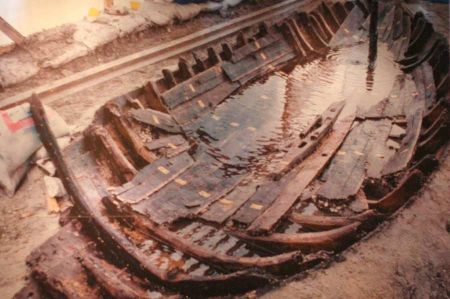Finds from construction pits of Marmaray project in Istanbul
- Written by Portal Editor
As part of the conference “İstanbul as an archaeological site” of the Mimar Sinan University of Fine Arts and the Anatolian Culture and Art Research Centre (AKSAM), finds from the excavation pits of the Mamaray project, the tunnel construction project of the subway Route below the Sea of Marmara, were presented.
Archaeological excavations as part of the Marmaray project have covered an area of more than 60,000 square meters in recent years. In some places they went to a depth of up to nine meters below sea level in the Sea of Marmara. In the course of the excavations, the ancient port of Emperor Theodosius from Roman times in the fourth century was discovered. The existence of this once important port was already known from records and ancient drawings, but the exact location was not known. This was then brought to light by initial excavation work on the construction pit, just a few hundred meters from the shore of the Sea of Marmara.
First, the ancient port of Emperor Theodosius
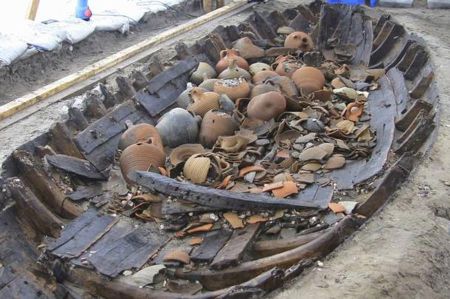 The construction site has been sifting, inspecting and numbering since 2004. A job that sapped the strength of the archaeological "construction workers": the lumps on the workers' boots were heavy; The clay soil was black, making every wheelbarrow load sluggish. Each load was examined by an archaeological expert. Only then did we go over makeshift walkways to the tents in which the finds were stacked and the ship's wood, which was more than a thousand years old, was irrigated to prevent it from decaying. So far, 33 shipwrecks have come to light, often with cargo. Jugs, oil lamps and baskets lay in between, coins and plates could be recovered. Every nail in the planks was measured and registered to the millimetre. The frames of the ships were surprisingly well preserved.
The construction site has been sifting, inspecting and numbering since 2004. A job that sapped the strength of the archaeological "construction workers": the lumps on the workers' boots were heavy; The clay soil was black, making every wheelbarrow load sluggish. Each load was examined by an archaeological expert. Only then did we go over makeshift walkways to the tents in which the finds were stacked and the ship's wood, which was more than a thousand years old, was irrigated to prevent it from decaying. So far, 33 shipwrecks have come to light, often with cargo. Jugs, oil lamps and baskets lay in between, coins and plates could be recovered. Every nail in the planks was measured and registered to the millimetre. The frames of the ships were surprisingly well preserved.
Many of the ships seem to have been abandoned from one moment to the next, sunk to the bottom of the harbour or thrown onto the shore as if by a giant hand. Others still had their heavy statues, building materials, blocks for temple complexes or magnificent buildings on board. The cause of this has not yet been clarified, possibly a tsunami triggered by an earthquake.
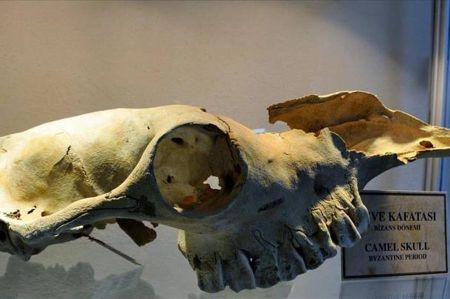 A small river that once flowed into the Sea of Marmara near Yenikapi caused the harbour basin to slowly silt up. Residents planted vegetables in the rather poor area for centuries and used the remains of the quay walls and footbridges as boundaries for gardens and flower beds.
A small river that once flowed into the Sea of Marmara near Yenikapi caused the harbour basin to slowly silt up. Residents planted vegetables in the rather poor area for centuries and used the remains of the quay walls and footbridges as boundaries for gardens and flower beds.
"Of course, time and money for archaeological finds were taken into account when planning the project, but the extent and wealth of the finds surprised us all," said Günter Haass from the German Society for Technical Cooperation (GTZ), who worked as a consultant for The Turkish Ministry of Transport had been sent. "It's great for Istanbul that we accidentally came across the long-buried Theodosian port, but for the Marmaray Tunnel project this means an enormous delay." Although this does not call into question the financing - the The Bank of Japan and the European Investment Bank are making the funds available despite the time delay - but the loans are becoming more expensive and the time at which the income will flow is now shifting considerably.
The slow silting up of the harbor basin
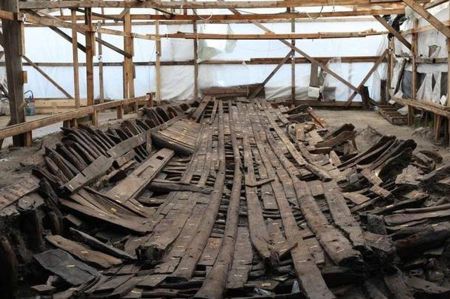 With the evaluations of the largest of all port facility discoveries to date The Mediterranean region, right at the interface between the Sea of Marmara and the Black Sea, will be busy for generations to come.
With the evaluations of the largest of all port facility discoveries to date The Mediterranean region, right at the interface between the Sea of Marmara and the Black Sea, will be busy for generations to come.
A few years ago, the results of the excavations could be admired in a special exhibition in the Archaeological Museum.
Ship hulls from the 9th and 11th centuries, recovered in clay and sensationally well preserved, were excavated and preserved using every trick in the book. Countless other artifacts were on display in the exhibition “Under Daylight: 8,000 Years of Istanbul” and will be permanently presented to the public in a few years in a new museum in the immediate vicinity of the future Yenikapi interchange station.
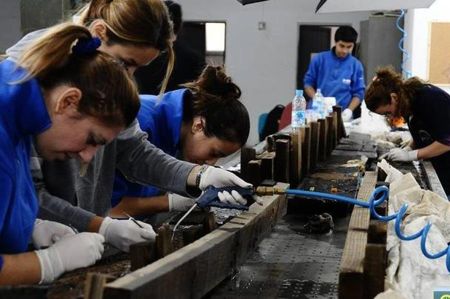 In the meantime, there were plans to turn the area into an archaeological theme park after the excavations were completed. However, such ambitions could stand or fall with the impatience of Turkish Prime Minister Recep Tayyip Erdoğan. After all, the excavations are delaying the completion of the project by at least another four years, which Erdoğan commented at the time as follows: “You have put hurdles and excuses in front of us, such as archaeological excavations or amphoras and the like.”
In the meantime, there were plans to turn the area into an archaeological theme park after the excavations were completed. However, such ambitions could stand or fall with the impatience of Turkish Prime Minister Recep Tayyip Erdoğan. After all, the excavations are delaying the completion of the project by at least another four years, which Erdoğan commented at the time as follows: “You have put hurdles and excuses in front of us, such as archaeological excavations or amphoras and the like.”
Turkish President Abdullah Gül showed more understanding for the work during a visit to the research facility. He noted in the guest book: "It is clear that the archaeological finds discovered on this site shed light on İstanbul's glorious past as well as the different eras in humanity's historical adventure."
The most exciting finds, however, are the 1,500 footprints and wooden graves
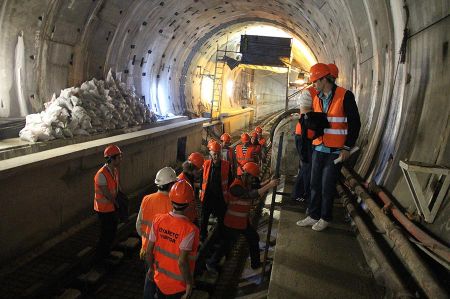 It is possible that the museum will be much larger than currently planned, because "every groundbreaking on this historic site brings new surprises," said Günter Haass, summing up his experiences so far. In addition, the teams of archaeologists, art historians and architects discovered countless graves, items of clothing, shards of clay and glass, earthenware, amphorae, anchors, metal objects, statuettes, foundation walls and combs. The experts date the finds from the Ottoman period through Byzantium, the Roman Empire and the Greek Classical period to the Neolithic period.
It is possible that the museum will be much larger than currently planned, because "every groundbreaking on this historic site brings new surprises," said Günter Haass, summing up his experiences so far. In addition, the teams of archaeologists, art historians and architects discovered countless graves, items of clothing, shards of clay and glass, earthenware, amphorae, anchors, metal objects, statuettes, foundation walls and combs. The experts date the finds from the Ottoman period through Byzantium, the Roman Empire and the Greek Classical period to the Neolithic period.
Archaeologists previously assumed that the history of Istanbul began around 2,700 years ago. Now it looks as if science has to rethink. The most exciting finds, however, are the 1,500 footprints and wooden graves with human skeletons that date back to around 6,000 to 6,500 BC. Be estimated. They refute the previous theory that the first human settlements in Istanbul were built 2,700 years ago.
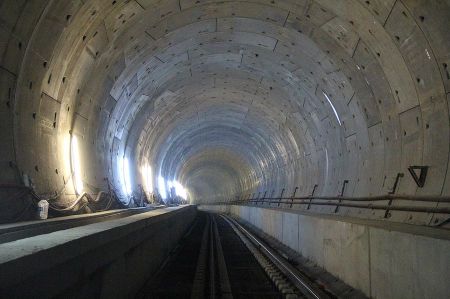 Archaeologists now suspect that they were preserved thanks to an unusual natural phenomenon. That ritual was probably held in a riverbed where there was muddy ground. The footprints probably dried and solidified. Later they could have been covered with silt or alluvial deposits by floods and thus preserved.
Archaeologists now suspect that they were preserved thanks to an unusual natural phenomenon. That ritual was probably held in a riverbed where there was muddy ground. The footprints probably dried and solidified. Later they could have been covered with silt or alluvial deposits by floods and thus preserved.
The sizes of the footprints range from today's European shoe sizes 35 to 42. Anthropologists believe that the footprints come from those skeletons that were found at the same location. The excavations also uncovered two well-preserved graves, which probably date from the same time.
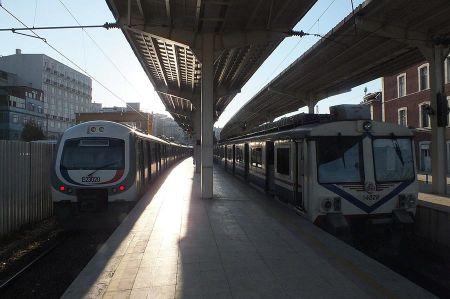 It remains to be seen whether the planned construction of a museum to permanently display all the artifacts will take place. At least the current exhibition has once again served as a reminder of the urgent need to build another museum.
It remains to be seen whether the planned construction of a museum to permanently display all the artifacts will take place. At least the current exhibition has once again served as a reminder of the urgent need to build another museum.
Please read as well:
